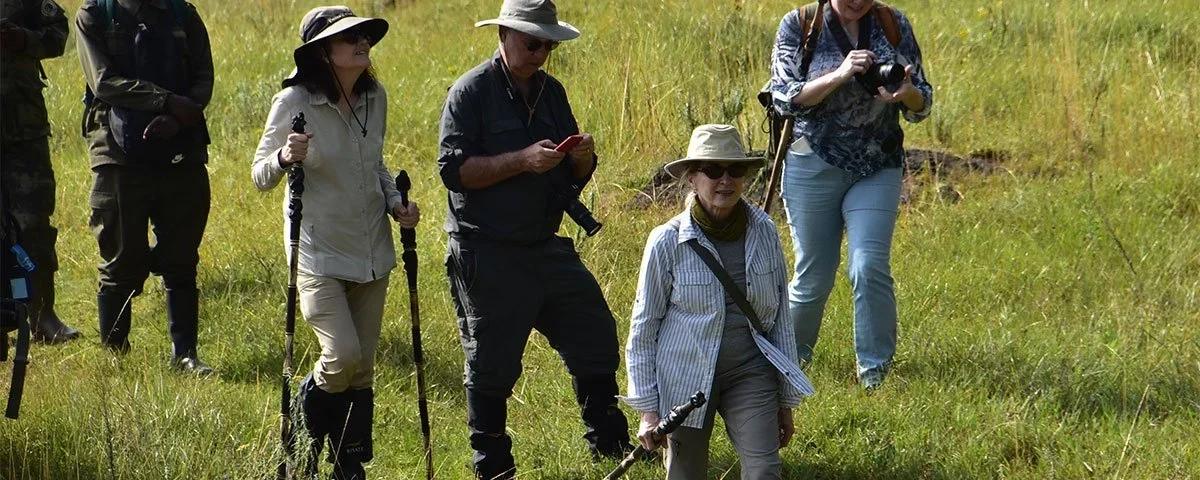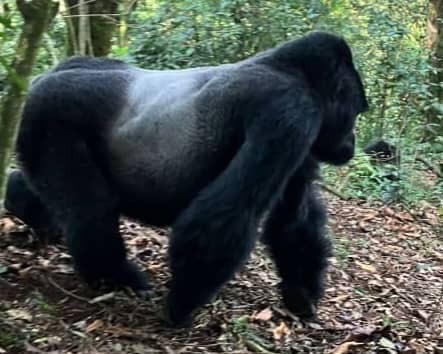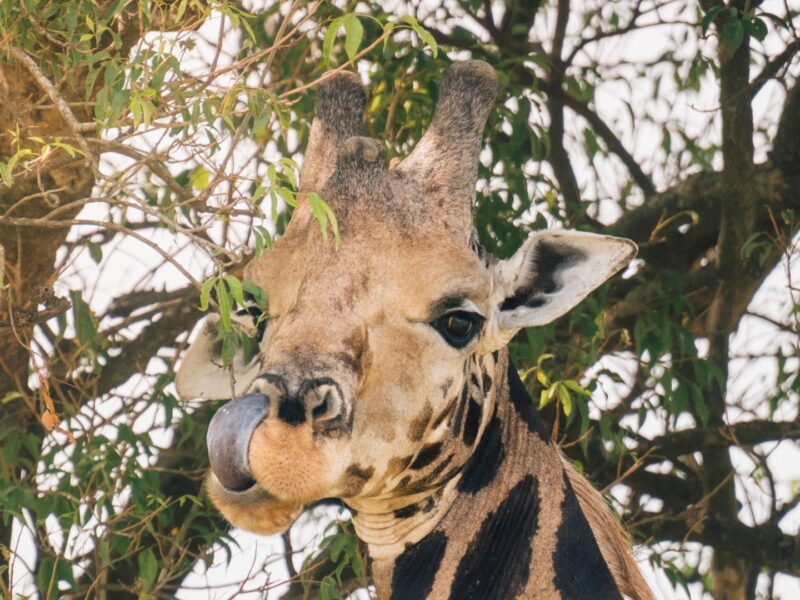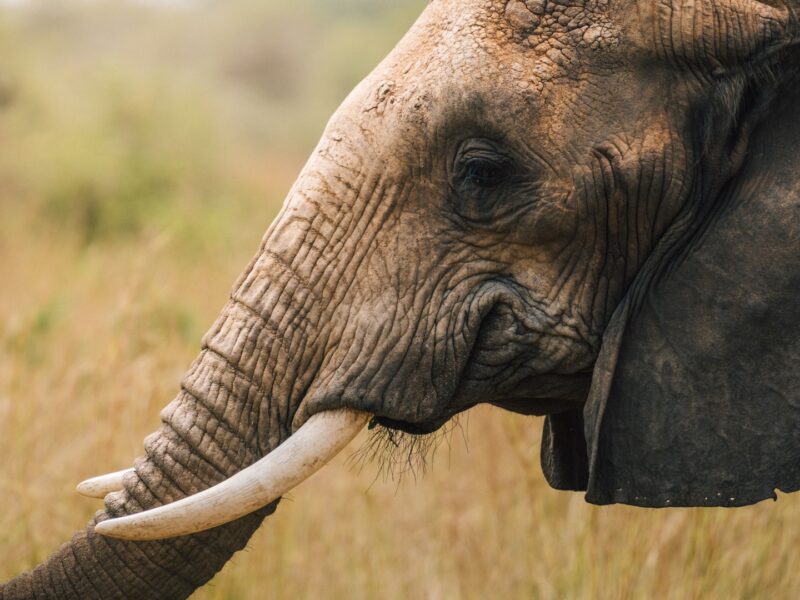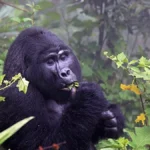
The Best Time to Come for Gorilla Trekking
July 14, 2025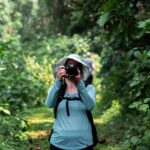
Travel Solo for Gorilla Trekking
July 16, 2025Why Do We Wear Face Masks When Gorilla Trekking?
When travelers prepare for Uganda gorilla trekking in Bwindi Impenetrable National Park, one of the most common—and often surprising—requirements is wearing a face mask during the actual gorilla encounter. For some, this raises questions: Why is it necessary? What happens if I don’t? This article by Ngeye Tours & Travel explores the science, ethics, and practical realities behind face mask use on gorilla trekking safaris, while also guiding readers through the broader wonders of Uganda gorilla tours, cultural immersion, and adventure experiences that define Africa gorilla trekking. As we unpack the importance of conservation, traveler responsibility, and what makes Bwindi Impenetrable Forest the best gorilla trekking safari destination, you’ll discover that a mask is far more than just a rule—it’s a symbol of respect and shared stewardship for one of Earth’s most endangered animals.
Why choose Bwindi Impenetrable Forest for your Uganda gorilla trekking experience?
Nestled in southwestern Uganda, Bwindi Impenetrable Forest is a lush, ancient rainforest that stretches over steep hills and mist-shrouded valleys. It’s not just its dramatic landscape that captivates; it’s the fact that this forest protects nearly half of the world’s remaining mountain gorillas. This makes Bwindi Impenetrable National Park an unrivaled destination for Uganda gorilla trekking.
But what truly sets Bwindi apart is the unique encounter it offers. Each trek takes you deep into a living tapestry of biodiversity, where every rustling branch might reveal a gorilla family resting, feeding, or nurturing young. As visitors often ask, What makes Bwindi Impenetrable National Park the best gorilla trekking safari destination? The answer lies in its rich biodiversity, small group trekking policy, and commitment to conservation that ensures each visit directly supports the survival of mountain gorillas and the well-being of local communities.
The necessity of face masks: Protecting gorillas from human diseases
At the heart of Africa gorilla trekking is the delicate balance between close human contact and the need to protect gorillas from illness. Mountain gorillas share approximately 98% of our DNA, making them remarkably susceptible to human-borne diseases, including common colds, flu, and respiratory infections.
Wearing a face mask while observing these gentle giants is not merely a suggestion—it is an essential conservation practice. It serves as a barrier to minimize the spread of airborne pathogens that could threaten gorilla health. Even a mild cough or sneeze from a visitor can pose a significant risk. The gorillas’ immune systems are not equipped to handle many human illnesses, which could lead to severe illness or death within the group.
When visitors ask, What happens if I don’t wear a mask? the consequences can be profound. Beyond risking the health of these critically endangered animals, refusing to wear a mask can result in immediate exclusion from the trek. Uganda Wildlife Authority and licensed tour operators strictly enforce this rule, not out of inconvenience, but as a vital step to ensure the continued survival of mountain gorillas.
Gorilla trekking safaris: More than just seeing gorillas
Gorilla trekking in Bwindi Impenetrable National Park is about far more than a fleeting wildlife sighting. It is an immersive journey through ancient forests, a chance to witness intricate social dynamics within gorilla families, and an opportunity to reflect on our role in conserving the natural world.
Each trek begins with a briefing from experienced guides and trackers who share their deep knowledge of gorilla behavior, conservation efforts, and trekking etiquette. As you ascend forest trails, the anticipation builds until finally, you stand quietly among the gorillas—watching, listening, and capturing photos (always without flash).
This encounter is profoundly emotional, and wearing a mask becomes a quiet gesture of solidarity—a recognition that our presence must never come at the cost of the gorillas’ safety. For many, this moment transforms a Uganda gorilla safari from a simple adventure into a life-changing experience.
How can you combine gorilla trekking safaris with cultural tours and other activities in Uganda?
Uganda gorilla tours rarely end with the trek itself. The beauty of traveling in Uganda lies in its diversity of experiences that enrich every itinerary. After your time in Bwindi Impenetrable Forest, consider exploring the cultural heritage of the Batwa people, the original forest dwellers whose knowledge of local flora, traditional medicine, and storytelling provides a fascinating window into the region’s history.
Many travelers also ask, How can we make the most of our time beyond gorilla trekking? The answer is as varied as Uganda’s landscapes. In Queen Elizabeth National Park, embark on game drives to see elephants, lions, and buffalo, or cruise the Kazinga Channel where hippos and crocodiles gather. Kibale Forest National Park offers chimpanzee trekking, where you can witness these lively primates in their natural habitat.
For bird enthusiasts, Uganda is a paradise, with over 1,000 recorded species, including the remarkable African green broadbill found in Bwindi and the elusive shoebill stork in wetlands. Adventure seekers can raft the Nile’s powerful rapids in Jinja, or hike the snow-capped peaks of the Rwenzori Mountains, known as the “Mountains of the Moon.”
What makes Bwindi Impenetrable National Park the best gorilla trekking safari destination?
While Rwanda and the Democratic Republic of Congo also offer gorilla trekking, Bwindi’s appeal lies in its untouched wilderness, diverse trekking routes, and broader conservation story. Treks can vary in length and difficulty, accommodating different fitness levels and offering unique forest vistas.
Moreover, the economic and conservation impact of Uganda gorilla trekking is tangible in Bwindi. Permit fees directly fund ranger salaries, anti-poaching efforts, and healthcare and education initiatives for local communities. This model ensures that each visitor plays an active role in gorilla conservation.
Visitors often note that the trek itself—winding through dense vines and misty clearings—is as rewarding as the gorilla encounter. This sense of journey, of earning your time with the gorillas, makes Bwindi the best gorilla trekking safari destination in Africa.
Responsible tourism and the face mask’s deeper meaning
Wearing a face mask is a simple act, but it reflects a traveler’s commitment to responsible tourism. In gorilla trekking safaris, it symbolizes an understanding that conservation is not passive. It requires conscious choices—limiting our impact, following guidelines, and respecting local communities and ecosystems.
Beyond health protection, masks also reduce stress for gorillas, who can perceive loud coughing or sneezing as a threat. Quiet observation, limited numbers per group, and a minimum distance of seven meters are all part of the protocols designed to ensure these encounters remain sustainable.
Additional safari adventures: Completing your Uganda journey
A Uganda gorilla safari can become part of a grand adventure through the country’s national parks and cultural landmarks. Visit Murchison Falls National Park, where the Nile River surges through a narrow gorge, creating a stunning natural spectacle. Track white rhinos on foot at Ziwa Rhino Sanctuary to complete your Big Five experience.
Head north to Kidepo Valley National Park, a remote wilderness where cheetahs hunt and cultural encounters with the Karamojong people reveal rich traditions. At Lake Mburo National Park, take a walking safari among zebra and impala, or glide across the lake by boat.
These extensions transform Uganda gorilla tours into multidimensional journeys that showcase the country’s beauty, wildlife, and people.
Why choose Ngeye Tours & Travel for your Uganda gorilla safari?
At Ngeye Tours & Travel, we believe that a meaningful safari balances adventure, cultural connection, and conservation. Our expertly crafted Uganda gorilla tours do more than bring you face-to-face with gorillas—they invite you to see Bwindi Impenetrable Forest through the eyes of local guides, connect with communities, and experience the best gorilla trekking safari tailored to your interests and values.
We help you understand why practices like wearing a mask matter, ensuring your journey contributes positively to wildlife protection. With a deep commitment to responsible travel, we create safaris that inspire and transform.
Choosing to trek with us means stepping into a shared story of conservation and discovery—where every detail, from planning the right season to combining cultural tours and adventure activities, is handled with care. Discover why Uganda is called the Pearl of Africa, and let us help you write your chapter in its remarkable story.
Article by Ngeye Tours & Travel


